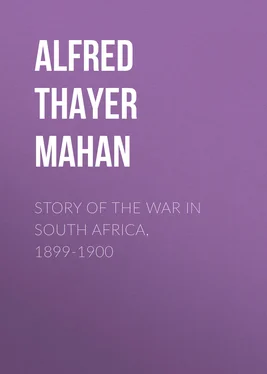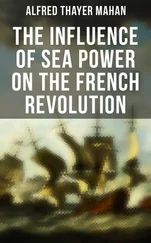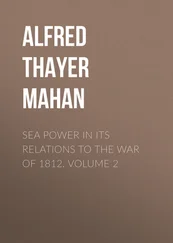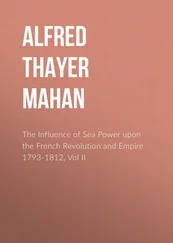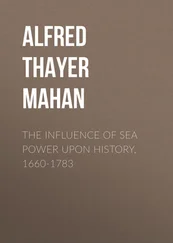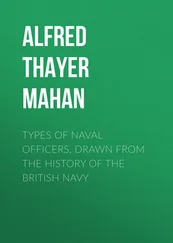Alfred Thayer Mahan - Story of the War in South Africa, 1899-1900
Здесь есть возможность читать онлайн «Alfred Thayer Mahan - Story of the War in South Africa, 1899-1900» — ознакомительный отрывок электронной книги совершенно бесплатно, а после прочтения отрывка купить полную версию. В некоторых случаях можно слушать аудио, скачать через торрент в формате fb2 и присутствует краткое содержание. Жанр: foreign_prose, История, foreign_edu, foreign_antique, на английском языке. Описание произведения, (предисловие) а так же отзывы посетителей доступны на портале библиотеки ЛибКат.
- Название:Story of the War in South Africa, 1899-1900
- Автор:
- Жанр:
- Год:неизвестен
- ISBN:нет данных
- Рейтинг книги:4 / 5. Голосов: 1
-
Избранное:Добавить в избранное
- Отзывы:
-
Ваша оценка:
- 80
- 1
- 2
- 3
- 4
- 5
Story of the War in South Africa, 1899-1900: краткое содержание, описание и аннотация
Предлагаем к чтению аннотацию, описание, краткое содержание или предисловие (зависит от того, что написал сам автор книги «Story of the War in South Africa, 1899-1900»). Если вы не нашли необходимую информацию о книге — напишите в комментариях, мы постараемся отыскать её.
Story of the War in South Africa, 1899-1900 — читать онлайн ознакомительный отрывок
Ниже представлен текст книги, разбитый по страницам. Система сохранения места последней прочитанной страницы, позволяет с удобством читать онлайн бесплатно книгу «Story of the War in South Africa, 1899-1900», без необходимости каждый раз заново искать на чём Вы остановились. Поставьте закладку, и сможете в любой момент перейти на страницу, на которой закончили чтение.
Интервал:
Закладка:
The increase of force in Natal to 15,000 men determined the sending out of an officer superior in rank to General Symons. Sir George White, designated for this duty, reached Cape Town October 3, and in view of the serious news he there received, proceeded at once to Durban. On the 9th, the day the Boer ultimatum was issued, he had at Pietermaritzburg an interview with the Governor, in which he expressed his disapproval of the position at Glencoe—an opinion in which other officers of rank present coincided. The Governor replied that General Symons had thought it safe, even before the Indian contingent arrived; that the step had been taken to assure the coal supply; and that to recede from it now would involve grave political consequences, disheartening the loyal, and tending to encourage a rising among the blacks and the disaffected Dutch. Without changing his opinion as to the military error involved, Sir George White resolved to allow the detachment to remain. The decision thus taken finally constituted the British military situation in Natal when the campaign opened; namely, an advanced detachment of three or four thousand at Glencoe and Dundee, a main body of eight to ten thousand at Ladysmith, with smaller posts guarding the communications in rear of the latter.
The greater exposure of Natal, owing to its nearness to the Boer States, had determined the concentration upon it of the bulk of the British forces in South Africa, including the reinforcements so far ordered; by the arrival of which it was expected that there would by the end of October be 22,000 troops in South Africa. It was not till October 7 that was issued the first order to mobilise, summoning 25,000 of the Army Reserve to join the colours.
The necessities of Natal left but scant numbers to Cape Colony, which was comparatively of less consequence, because the points of vital importance to Great Britain lay near the sea-coast, protected by their mere remoteness from any speedy attack. On the far inland borders of the colony the situation soon reduced itself to that with which we were so long familiar. The four or five thousand men available at the outbreak of the war for the defence of the long frontier, extending over five hundred miles, from the Basutoland boundary to Mafeking, were obliged by the necessities of the case to concentrate; which they did at Mafeking and Kimberley. There they were speedily invested; and, being thus held in check, the border country, including the important railroad junctions of De Aar, Naauwport and Stormberg, lay freely open to the enemy. The seriousness of this military condition was much increased by the well-known political fact that the Dutch population of the region sympathized more or less actively with the Boers. In fact many of them, upon the opening of hostilities, crossed the border to join the forces of the Orange Free State.
On the 9th of October, 1899, the Transvaal Government presented an ultimatum. After recounting the political grievances of which it complained, it demanded that all points of mutual difference should be settled by arbitration, or other peaceful means, that the British troops near the Transvaal border should be withdrawn, that the recent reinforcements be removed altogether from South Africa, and that those still on the sea should not be landed. If a satisfactory answer were not received by 5 P.M., October 11, the action of the British Government would be regarded as a formal declaration of war. War therefore may be considered as having been formally initiated by the Transvaal, at the day and hour thus fixed.
For some time prior to the opening of hostilities, the armed men of both the South African Republic and the Free State had been assembling in force on their respective frontiers toward Natal; the latter less rapidly than the former, its military preparation not having received as full development as that of its ally, who for some years had been contemplating the possibility of war and accumulating material. The Transvaalers came in rapidly, and already by the end of September had gathered in numbers enough to warrant a speedy advance, before the expected reinforcements from India should reach the enemy.
There is good reason to believe that it was intended to issue the ultimatum on October 2, a week before its actual date; but there occurred the unpleasant surprise of finding that neither in food nor in ammunition were the supplies at hand sufficient to justify an immediate forward movement. The defect of imperfect transport organisation, inherent to hastily levied irregular troops, made itself at once felt. The delay doubtless strengthened both parties, but, as usual, inured most to the benefit of the one then on the defensive.
The first transports from India began to arrive on Tuesday, October 3, on which day also the bulk of the Natal volunteers were expected to be in their places; and in the six intervening days, preceding the ultimatum, eleven more steamers entered Durban with troops which were at once despatched to the front. General Symons took command at Dundee, Sir George White of the main body at Ladysmith.
The number of the Boers near at hand, and capable of being brought against either of the British posts, was variously estimated at the moment at from 8,000 to 13,000. There can be little doubt, however, that the latter figure was much more nearly correct; that, in fact, on October 11, the available force for the invasion rather exceeded than fell short of the higher figure. Although precise information is still lacking, there can be no doubt, from the character of the Boer operations, that rapid subsequent accessions raised their numbers in Natal to near 30,000 before the middle of November.
It is well here, on the verge of opening hostilities, to recall what has before been indicated, that the projection of the narrow neck of Natal, forming an acute salient angle between two hostile borders, gave especial facilities to the Boers to combine their movements outside the observation of the enemy, and to strike suddenly either at one of the British detachments, or at the railroad uniting them. Small bodies began to make their appearance from both quarters almost immediately after the expiry of the time set by the ultimatum, and for three or four days the ordinary reports of outpost observations and shots exchanged were continually received.
The uncertainty consequent upon these divergent demonstrations, some of which from the Free State seemed to aim at the rear of Ladysmith itself, was balanced and checked by the knowledge that the principal Transvaal force had assembled round Zandspruit, in its own territory, near the railroad, and some fifteen miles beyond Majuba Hill. There was reason also to believe that the Transvaalers would be found more enterprising and numerous than the Free State men. It was, therefore, natural to expect that the main attack would come from the north along the railroad, and from the east, where the approach from the Transvaal boundary, which is there marked by the Buffalo River, is over a country much more practicable than the western mountain range. These considerations in fact appear to have dictated the first combination of the Boers.
Within a week from the opening of hostilities, the latter had occupied Newcastle, thirty-seven miles by rail from Glencoe. On the 18th further demonstrations caused General Symons to withdraw the outpost stationed at Glencoe to the camp, which was a mile and a half west of Dundee. The following day, Thursday, he received information, which proved to be in the main accurate, that a combined movement was in progress by which his position was to be simultaneously attacked from the north and from the east. The force in the latter direction was given at 7,000—probably an excessive estimate; although, as several commandos had been reported on Wednesday to be moving from the northern toward the eastern column, it is probable that the latter was expected to make the chief attack. A British reconnaissance on the same evening had showed the enemy apparently in force some ten miles to the northward on the railway; but, if an attack from that quarter were intended, the Boer combination failed, for none was made. General Joubert, in reporting the results, said, "Commandant Lucas Meyer (commanding the eastern force) has had an engagement with the British at Dundee. Meyer made a plan of campaign by messenger with Commandant Erasmus, who, however, did not put in an appearance." Convergent attacks, intended to be simultaneous, but starting from different quarters, are particularly liable to such mishaps.
Читать дальшеИнтервал:
Закладка:
Похожие книги на «Story of the War in South Africa, 1899-1900»
Представляем Вашему вниманию похожие книги на «Story of the War in South Africa, 1899-1900» списком для выбора. Мы отобрали схожую по названию и смыслу литературу в надежде предоставить читателям больше вариантов отыскать новые, интересные, ещё непрочитанные произведения.
Обсуждение, отзывы о книге «Story of the War in South Africa, 1899-1900» и просто собственные мнения читателей. Оставьте ваши комментарии, напишите, что Вы думаете о произведении, его смысле или главных героях. Укажите что конкретно понравилось, а что нет, и почему Вы так считаете.
